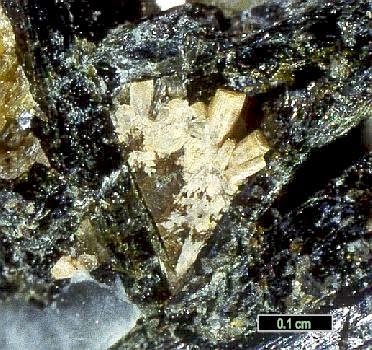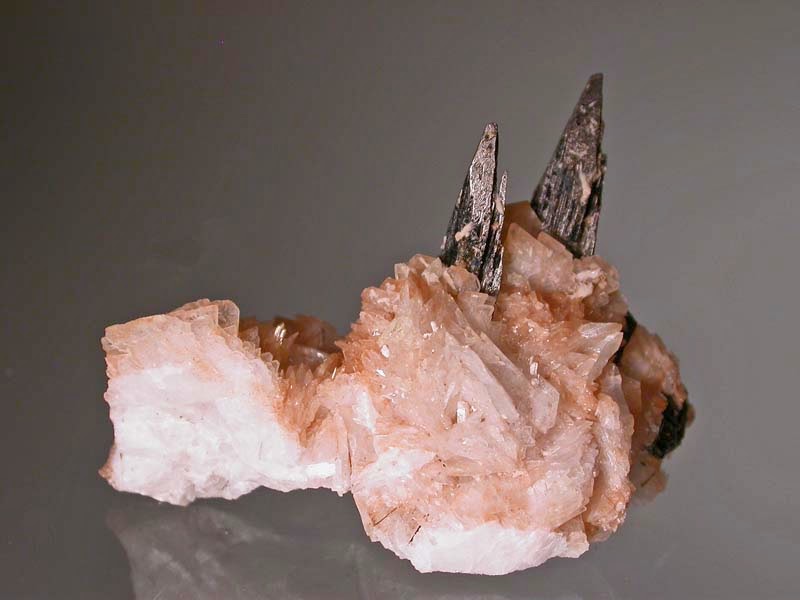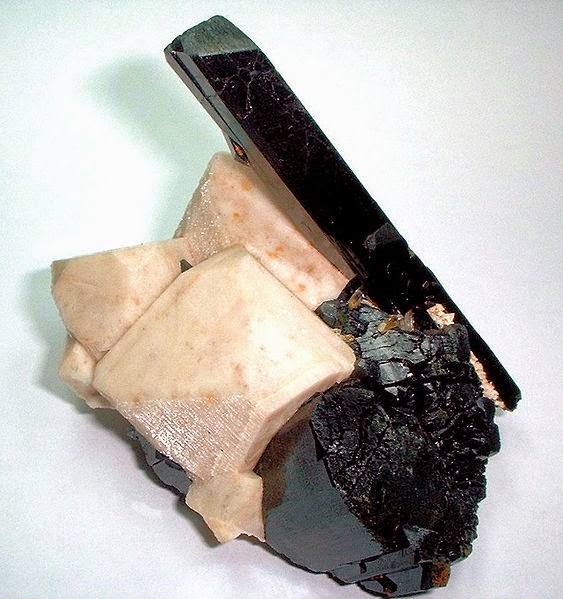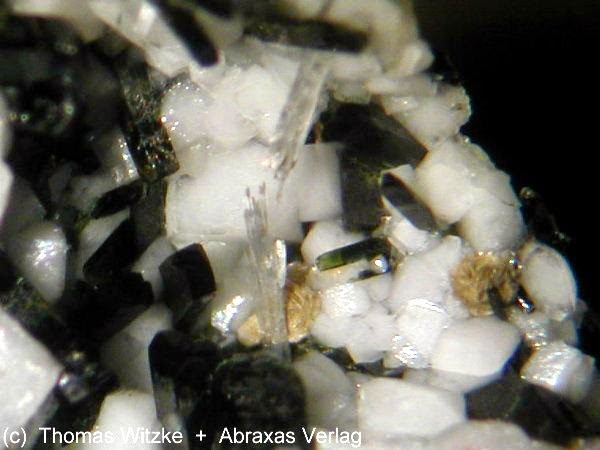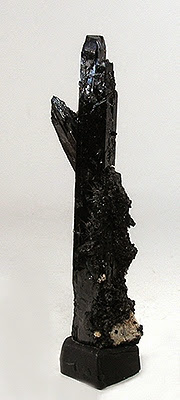
Chemical Formula: NaFe3+Si2O6
Locality: Norway, Buskerud, Kongsberg. Magnet Cove, Hot Spring County, Arkansas.
Name Origin: Named after the Teutonic god of the sea. Acmite is from the Greek “point” in allusion to the pointed crystals.
Aegirine is a member of the clinopyroxene group of inosilicates. Aegirine is the sodium endmember of the aegirine-augite series. Aegirine has the chemical formula NaFe3+Si2O6 in which the iron is present as Fe3+. In the aegirine-augite series the sodium is variably replaced by calcium with iron(II) and magnesium replacing the iron(III) to balance the charge. Aluminium also substitutes for the iron(III). It is also known as acmite, which is a fibrous, green-colored variety.
Aegirine occurs as dark green monoclinic prismatic crystals. It has a glassy luster and perfect cleavage. The Mohs hardness varies from 5 to 6 and the specific gravity is 3.2 to 3.4.
Commonly occurs in alkalic igneous rocks, nepheline syenites, carbonatites and pegmatites. Also in regionally metamorphosed schists, gneisses, and iron formations; in blueschist facies rocks, and from sodium metasomatism in granulites. It may occur as an authigenic mineral in shales and marls. It occurs in association with potassic feldspar, nepheline, riebeckite, arfvedsonite, aenigmatite, astrophyllite, catapleiite, eudialyte, serandite and apophyllite.
Localities include Mont Saint-Hilaire, Quebec, Canada; Kongsberg, Norway; Narsarssuk, Greenland; Kola Peninsula, Russia; Magnet Cove, Arkansas, USA; Kenya; Scotland and Nigeria.
It was first described in 1835 for an occurrence in Rundemyr, Øvre Eiker, Buskerud, Norway. Aegirine was named after Ægir, the Teutonic god of the sea. A synonym for the mineral is acmite (from Greek ἀκμή “point, edge”) in reference to the typical pointed crystals.
Physical Properties
Color: Green, Greenish black, Reddish brown, Black.
Density: 3.5 – 3.54, Average = 3.52
Diaphaneity: Subtransparent to translucent to opaque
Fracture: Brittle – Generally displayed by glasses and most non-metallic minerals.
Hardness: 6-6.5 – Orthoclase-Pyrite
Luminescence: Non-fluorescent.
Luster: Vitreous – Resinous
Streak: yellowish gray
Photos:
